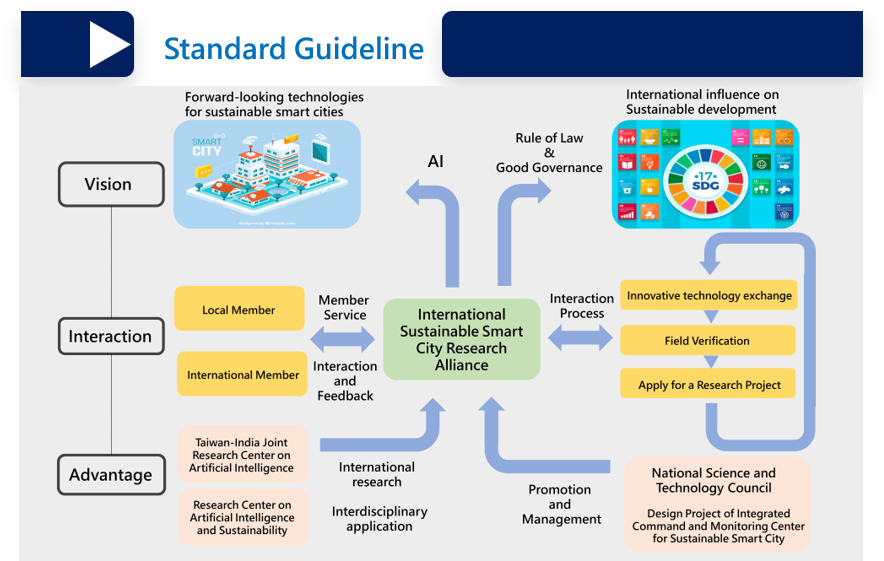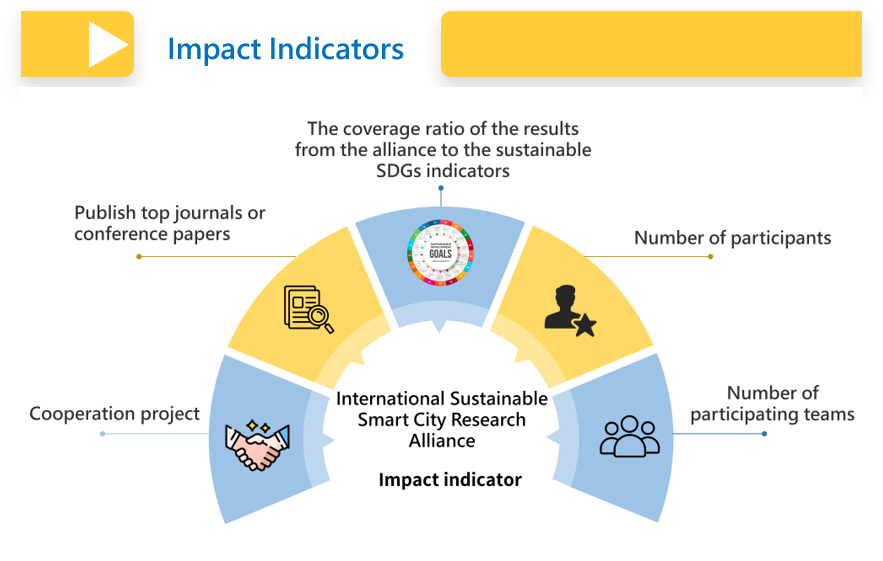Standard Guideline & Impact Indicators
Standard guideline of International Sustainable Smart City Research Alliance
The industries or projects implemented by the members of the alliance are related to "smart cities" or "sustainable cities". Therefore, the alliance aims to promote exchanges and cooperation between members, so as to ensure that each member can have a good relationship. The following is the process of cooperation and interaction among the members of this alliance:
Members will need to submit an application, and after the review was passed, both parties will sign an MoU and officially become members of the alliance (There are two types of membership: General Member & VIP Member).
1. The valid membership period of the alliance is one year after becoming an official member of the alliance. Members can offer an extension by signing the MoU again.
2. After becoming a member of this alliance, members can enjoy the services provided by the alliance, and the service content varies depending on the type of membership.
3. Alliance members can use the resources provided by the alliance, and can also share their own resources with other members.

Impact Indicators
The establishment of this research alliance aims to promote the interaction of smart city technology applications and resource sharing among alliance members. The influence indicators are established by the alliance to evaluate the contribution of the alliance to sustainable smart cities. The influence indicators are as follows:
1. Cooperation project: The alliance will promote exchanges and interactions between members, and will jointly apply for and implement research projects.
2. Publish top journals or conference papers: Alliance members will jointly publish papers to top journals or conference papers.
3. The coverage ratio of the results from the alliance to the sustainable SDGs indicators: The UN’s SDGs include 17 sustainable goals and 169 targets. The alliance will examine the outcome of the alliance regarding the coverage of the SDGs indicators proposed by the UN.
4. Number of participants: The number of people participating in the alliance can be regarded as the reach rate of the alliance to the target audience. If the engaged numbers in the alliance can be increased, the exposure of the alliance can be improved, and at the same time, not only potential audiences but also the influence of the alliance can be increased.
5. The number of participating teams: To become a member of the alliance, it must be agreed upon by both parties, and must be approved by certain procedures. Therefore, the number of participating teams is used as an indicator for examining the influence of the alliance.

